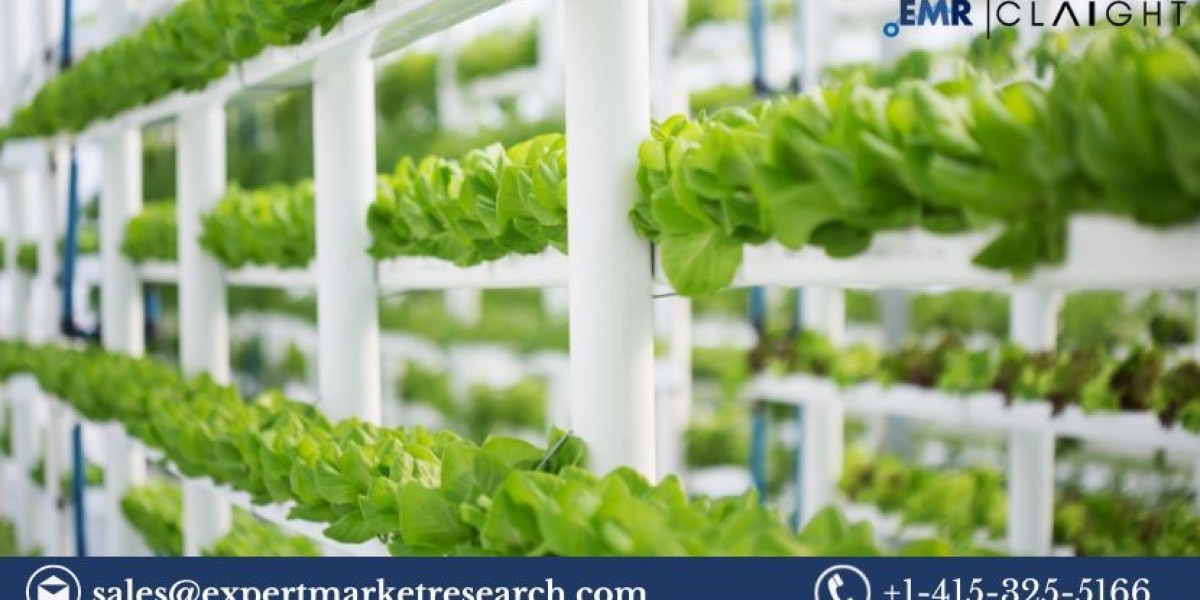The global vertical farming market size is experiencing rapid expansion, driven by the need for sustainable agricultural solutions, rising urbanization, and the demand for fresh, pesticide-free produce. Vertical farming uses controlled-environment agriculture (CEA) techniques, hydroponics, aeroponics, and aquaponics to grow crops indoors, reducing land use and water consumption.
In 2024, the vertical farming market reached USD 5.49 billion, and it is projected to grow at a CAGR of 21.00% from 2025 to 2034, reaching approximately USD 36.93 billion by 2034.
This blog explores the market dynamics, key drivers, challenges, trends, and future opportunities shaping the global vertical farming industry.
Market Overview
Vertical farming is revolutionizing agriculture by allowing crop cultivation in vertically stacked layers using controlled environments. It enables year-round farming, reducing reliance on traditional farmlands and mitigating climate change effects.
Key factors shaping the market include:
- Growing need for sustainable food production
- Urban population growth and limited arable land
- Adoption of AI, IoT, and automation in agriculture
- Government support for sustainable and local food systems
With the rise of indoor farming technologies and advanced hydroponic systems, the market is witnessing significant investments from agribusiness companies, tech firms, and venture capitalists.
Key Market Drivers
Several factors are fueling the growth of the global vertical farming market:
1. Rising Demand for Sustainable and Locally Grown Food
Consumers prefer fresh, pesticide-free, and locally grown produce. Vertical farming reduces transportation costs and carbon emissions, making it a sustainable alternative to traditional farming.
2. Increasing Urbanization and Declining Arable Land
As urban populations grow, available farmland shrinks. Vertical farming enables food production within cities, using minimal land and water resources.
3. Technological Advancements in Controlled-Environment Agriculture (CEA)
Smart farming solutions, including IoT sensors, AI-driven climate control, and automated harvesting, improve crop yield, efficiency, and resource management.
4. Water and Resource Efficiency
Vertical farming systems use 90% less water than traditional farming through recycling and precision irrigation techniques. This is crucial in water-scarce regions.
5. Government Support and Investments
Governments worldwide promote sustainable agriculture and food security. Policies supporting urban farming, renewable energy use, and indoor agriculture incentives are driving market growth.
6. Growth of Organic and Pesticide-Free Agriculture
Consumers demand chemical-free and nutrient-rich food. Vertical farming eliminates the need for harmful pesticides, offering healthier food options.
Market Challenges
Despite its strong growth, the vertical farming industry faces several challenges:
1. High Initial Investment and Operational Costs
Setting up a vertical farm requires significant capital for infrastructure, climate control, and automation. Energy costs for LED lighting and temperature control can be high.
2. Dependence on Technology and Energy
Vertical farms rely on continuous power supply for lighting, irrigation, and climate control. Energy-efficient solutions and renewable energy integration are crucial to reduce costs.
3. Limited Crop Variety
Vertical farming is ideal for leafy greens, herbs, and strawberries, but staple crops like wheat, rice, and corn require more space and sunlight, limiting feasibility.
4. Lack of Awareness and Technical Expertise
Many farmers and investors lack knowledge about hydroponics, aeroponics, and AI-driven farming. Education and training programs can increase adoption.
5. Market Competition and Scalability Issues
Large-scale commercial farms dominate the food industry, making it challenging for small vertical farms to compete. Scaling production while maintaining cost-efficiency remains a concern.
Key Market Trends
Several emerging trends are shaping the global vertical farming industry:
1. Expansion of AI and Automation in Vertical Farms
AI-driven climate control, robotic harvesting, and machine learning algorithms optimize plant growth and reduce labor costs.
2. Growth of Hydroponics and Aeroponics Farming Methods
- Hydroponics: Uses nutrient-rich water solutions instead of soil.
- Aeroponics: Suspends plants in the air, delivering nutrients through misting.
- These methods increase yield and reduce water usage.
3. Rise of Vertical Farming in Retail and Restaurants
Supermarkets and restaurants are adopting on-site vertical farms, providing fresh, hyper-local produce to customers.
4. Integration of Renewable Energy in Indoor Farms
Solar panels, wind energy, and energy-efficient LED lighting are helping reduce the carbon footprint of vertical farms.
5. Development of Smart Cities with Integrated Urban Farming
Future smart cities will incorporate rooftop greenhouses, vertical gardens, and community farms to promote self-sufficiency and sustainable food production.
6. Expansion of Pharmaceutical and Medicinal Plant Cultivation
Vertical farming is being used for medicinal plants, cannabis cultivation, and nutraceutical ingredients, opening new market opportunities.
Market Segmentation
The global vertical farming market is segmented based on farming technique, structure type, component, and region.
1. By Farming Technique
- Hydroponics – Most widely used, water-based nutrient system.
- Aeroponics – High-tech, mist-based nutrient delivery.
- Aquaponics – Combines hydroponics with fish farming.
2. By Structure Type
- Building-Based Vertical Farms – Urban farms inside buildings and warehouses.
- Container-Based Vertical Farms – Mobile farms in shipping containers.
3. By Component
- Lighting Systems – LED grow lights, energy-efficient illumination.
- Climate Control Systems – Temperature, humidity, and air circulation management.
- Sensors and Monitoring Systems – IoT-based real-time tracking.
- Irrigation Systems – Drip irrigation and automated water distribution.
4. By Region
- North America – Strong presence of tech-driven vertical farms.
- Europe – Growth in sustainable urban farming projects.
- Asia-Pacific – Increasing demand for food security and smart agriculture.
- Middle East & Africa – Adoption of vertical farming for desert agriculture.
Future Outlook (2025-2034)
The vertical farming industry will continue evolving with technological innovations, sustainable energy solutions, and AI-driven automation. Key developments expected in the coming years include:
- Increased adoption of AI-driven smart farms and automated crop monitoring.
- Expansion of vertical farming in urban cities to reduce reliance on imports.
- Advancements in plant genetics to improve yield and crop variety.
- Integration of blockchain for supply chain transparency in urban farming.
- Development of large-scale commercial vertical farms with AI-powered management.
With growing concerns over climate change, food security, and resource efficiency, the global vertical farming market is set to redefine modern agriculture and contribute to a sustainable future.



